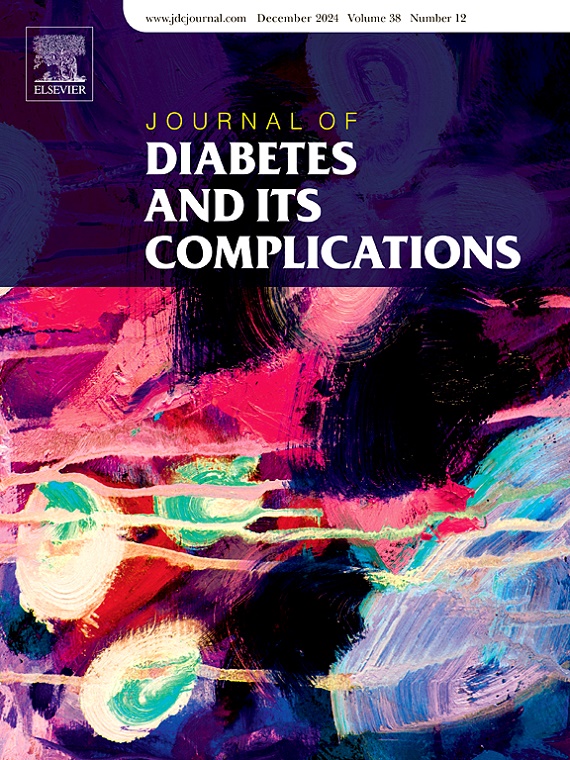Adherence to statins and development of atherosclerosis-related events. A systematic review and meta-analysis
IF 3.1
3区 医学
Q3 ENDOCRINOLOGY & METABOLISM
引用次数: 0
Abstract
Background
Adherence to lipid-lowering treatment (LLT) is of paramount importance for the prevention of atherosclerosis-related events (ASCVD). The threshold for someone to be adherent is ≥80 % of the total prescribed medication. We conducted a meta-analysis to assess how adherence to LLT affects the development of ASCVD.
Methods
We searched PubMed (up to February 2025) for randomized controlled trials, cohorts and nested case control studies that assessed adherence to LLT. We performed random effects meta-analysis with primary outcome the development of ASCVD based on the level of adherence to LLT.
Results
We included 66 articles corresponding to 3,345,718 individuals. All studies evaluated statins as LLT. Good vs. poor statin adherence reduced by 35 % the risk for all-cause mortality (RR:0.65; 95%CI: 0.56–0.76; I2 = 98 %), 24 % for any cardiovascular (CV) event (RR:0.76; 95%CI: 0.72–0.80; I2 = 90 %), 30 % for myocardial infarction (MI) (RR:0.70; 95%CI: 0.62–0.80; I2 = 90 %) and 32 % for stroke (RR:0.68; 95%CI: 0.58–0.79; I2 = 81 %). For participants without established ASCVD, statin adherence reduced by 32 % the risk for any CV event (RR:0.68; 95%CI: 0.46–1.00; I2 = 97 %). For those with established ASCVD, statin adherence reduced by 25 % the risk for any CV event (RR:0.75; 95%CI: 0.64–0.88; I2 = 64 %), 51 % for MI (RR:0.49; 95%CI: 0.32–0.73; I2 = 80 %) and 50 % for stroke (RR:0.50; 95%CI: 0.26–0.97; I2 = 87 %). Statin discontinuation increased by 90 % the mortality risk (RR:1.90; 95%CI: 1.33–2.71; I2 = 87 %). Even good vs. intermediate adherence (40 %–79 %) decreased by 32 % the risk for any CV event (RR:0.68; 95%CI: 0.60–0.76; I2 = 94 %). Sensitivity analyses including studies with different than the standard (≥80 %) threshold did not differ from the main results.
Conclusion
Statin adherence is of paramount importance to reduce ASCVD risk and mortality. Understanding adherence patterns or barriers and ensuring consistent adherence to LLT by tailored interventions should be a key priority in clinical practice and healthcare policies.
坚持服用他汀类药物和动脉粥样硬化相关事件的发展。系统回顾和荟萃分析
背景:坚持降脂治疗(LLT)对于预防动脉粥样硬化相关事件(ASCVD)至关重要。坚持服药的阈值≥处方总剂量的80%。我们进行了一项荟萃分析,以评估坚持LLT如何影响ASCVD的发展。方法:我们检索PubMed(截至2025年2月)中评估LLT依从性的随机对照试验、队列和嵌套病例对照研究。我们进行了随机效应荟萃分析,主要结局是基于LLT依从性的ASCVD发展。结果纳入66篇文献,涉及3345718人。所有的研究都将他汀类药物评价为LLT。他汀类药物依从性好与依从性差的患者全因死亡风险降低35% (RR:0.65;95%置信区间:0.56—-0.76;I2 = 98%), 24%为任何心血管(CV)事件(RR:0.76;95%置信区间:0.72—-0.80;I2 = 90%),心肌梗死(MI)为30% (RR:0.70;95%置信区间:0.62—-0.80;I2 = 90%), 32%为中风(RR:0.68;95%置信区间:0.58—-0.79;i2 = 81%)。对于没有ASCVD的参与者,他汀类药物依从性使任何CV事件的风险降低了32% (RR:0.68;95%置信区间:0.46—-1.00;i2 = 97%)。对于已确诊ASCVD的患者,他汀类药物依从性可使任何CV事件的风险降低25% (RR:0.75;95%置信区间:0.64—-0.88;I2 = 64%),心肌梗死为51% (RR:0.49;95%置信区间:0.32—-0.73;I2 = 80%), 50%为中风(RR:0.50;95%置信区间:0.26—-0.97;i2 = 87%)。他汀类药物停药使死亡风险增加90% (RR:1.90;95%置信区间:1.33—-2.71;i2 = 87%)。即使良好的依从性与中等依从性(40% - 79%)相比,任何CV事件的风险降低了32% (RR:0.68;95%置信区间:0.60—-0.76;i2 = 94%)。包括不同于标准阈值(≥80%)的研究的敏感性分析与主要结果没有差异。结论坚持他汀类药物治疗对降低ASCVD风险和死亡率至关重要。了解依从性模式或障碍,并通过量身定制的干预措施确保始终坚持LLT,应该是临床实践和医疗保健政策的关键优先事项。
本文章由计算机程序翻译,如有差异,请以英文原文为准。
求助全文
约1分钟内获得全文
求助全文
来源期刊

Journal of diabetes and its complications
医学-内分泌学与代谢
CiteScore
5.90
自引率
3.30%
发文量
153
审稿时长
16 days
期刊介绍:
Journal of Diabetes and Its Complications (JDC) is a journal for health care practitioners and researchers, that publishes original research about the pathogenesis, diagnosis and management of diabetes mellitus and its complications. JDC also publishes articles on physiological and molecular aspects of glucose homeostasis.
The primary purpose of JDC is to act as a source of information usable by diabetes practitioners and researchers to increase their knowledge about mechanisms of diabetes and complications development, and promote better management of people with diabetes who are at risk for those complications.
Manuscripts submitted to JDC can report any aspect of basic, translational or clinical research as well as epidemiology. Topics can range broadly from early prediabetes to late-stage complicated diabetes. Topics relevant to basic/translational reports include pancreatic islet dysfunction and insulin resistance, altered adipose tissue function in diabetes, altered neuronal control of glucose homeostasis and mechanisms of drug action. Topics relevant to diabetic complications include diabetic retinopathy, neuropathy and nephropathy; peripheral vascular disease and coronary heart disease; gastrointestinal disorders, renal failure and impotence; and hypertension and hyperlipidemia.
 求助内容:
求助内容: 应助结果提醒方式:
应助结果提醒方式:


